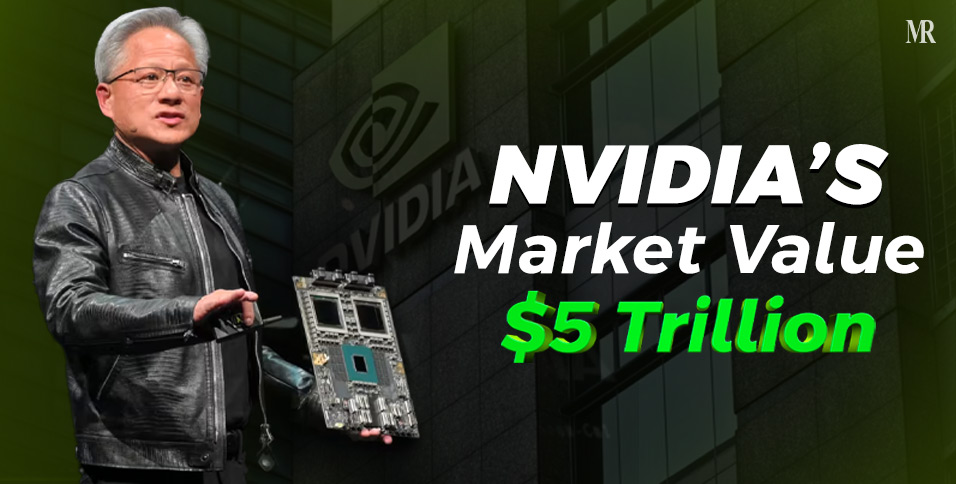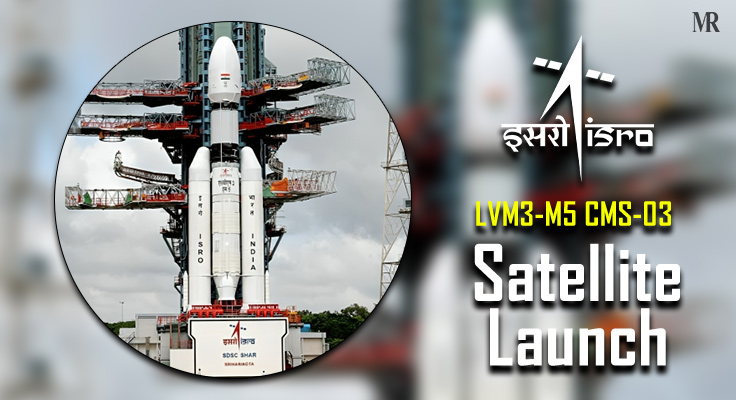$5 trillion! Just let that number sink in for a moment. It’s almost impossible to grasp, isn’t it? Nvidia’s market value didn’t just climb; it exploded to an unprecedented $5 trillion, marking a massive, pivotal moment in global technology. How on earth did they do it? They’ve completely harnessed the artificial intelligence boom.
This isn’t just about graphics cards for gaming anymore. Nvidia has brilliantly redefined itself, becoming the indispensable backbone of the entire AI industry. It’s a stunning story of pure hardware genius, an unshakeable software ecosystem, incredibly bold expansion, and even expertly navigating complex geopolitical currents.
Investors are buzzing, new benchmarks are being set, and the confidence is sky-high. Want to know how they really pulled it off? This ultimate analysis delves into every single core factor that propelled Nvidia to become the world’s most valuable company.
Let’s Explore Nvidia’s Market Value
1. Relentless Hardware Dominance (The Engine)
At the absolute heart of Nvidia’s market leadership is its relentless cadence of architectural innovation in GPU hardware. They simply never stop.
- This hardware is specifically designed from the ground up for the crushing, massive demands of artificial intelligence.
- But this strategy extends far beyond just individual chips. They create comprehensive platforms that now serve as the indispensable infrastructure for the entire future of computing.
- The Nvidia Blackwell Platform
The Nvidia Blackwell platform, which became widely available in late 2024 and early 2025, represents a significant technological leap over its predecessor, Hopper. It was specifically engineered for generative AI and large language models (LLMs).
- Get this: The Blackwell GPUs, like the B200, integrate 208 billion transistors. That is more than 2.5 times the 80 billion transistors found in the Hopper H100 GPUs!
- This massive transistor count results in a 2.5x performance boost over the previous-generation Hopper architecture.
- Blackwell employs a slick dual-die design, where two reticle-limit dies are connected by an ultra-fast 10 TB/s chip-to-chip interconnect. This allows them to function as a single, unified, cache-coherent GPU.
- These chips are manufactured using a custom-built TSMC 4NP process.
- The B200 GPU is capable of delivering up to 20 petaFLOPS of FP4 AI compute, with native support for 4-bit floating-point (FP4) AI.
- For LLM inference, Blackwell offers up to a 30x performance improvement compared to Hopper. Absolutely jaw-dropping, isn’t it?
- Memory capacity also got a huge enhancement. The B200 provides 192 GB of HBM3e memory, and the GB300 reaches 288 GB HBM3e—a substantial increase over Hopper’s 80 GB HBM3.
- The fifth-generation NVLink on Blackwell offers 1.8 TB/s of bidirectional bandwidth per GPU, doubling Hopper’s capacity and enabling model parallelism across up to 576 GPUs.
- Furthermore, Blackwell offers up to 25 times lower energy per inference and includes a second-generation Transformer Engine and a dedicated decompression engine for accelerated data processing.
- Nvidia’s Blackwell platform is currently in full production and is experiencing its fastest product ramp in the company’s history.
- The Rubin (2026) and Rubin Next (2027) Roadmap
And you know what? Nvidia isn’t slowing down. Their aggressive product roadmap extends far beyond Blackwell.
- The Rubin platform is already slated for release in the first half of 2026, with Rubin Ultra following in 2027.
- Rubin will feature the “Vera” Arm CPU and the R100 GPU, incorporating next-generation HBM4 memory. This is projected to boost memory bandwidth to an anticipated 13 TB/s.
- The full rack-scale system, the NVL144, is projected to deliver 3.6 exaflops of FP4 inference performance. That’s a 3.3-fold increase over comparable Blackwell systems!
- The Rubin Ultra platform, planned for the second half of 2027, is expected to introduce a four-die GPU package with 1 TB of HBM4e memory and scale to a 576-GPU liquid-cooled rack (NVL576). This will deliver an astonishing 15 exaflops of FP4 inference performance.
- Beyond Rubin, the roadmap includes the “Feynman” architecture, planned for 2028.
- This continuous innovation ensures that each generation is architecturally compatible, preserving the substantial software investments made by the global AI ecosystem, building on Nvidia’s platform.
- $500 Billion Revenue Projection
This is just staggering. At the GTC event in October 2025, Nvidia CEO Jensen Huang announced that the company had secured $500 billion in orders for its AI chips through the end of 2026.
- This projection, which includes orders for both the current Blackwell generation and upcoming Rubin chips, represents an unprecedented level of future revenue visibility.
- Huang noted that he believes Nvidia is “probably the first technology company in history to have visibility into half a trillion dollars” in revenue. What a statement!
- This outlook far exceeds analysts’ projections for Nvidia’s revenue during fiscal year 2027 and suggests the potential for significant stock growth.
- The demand for Blackwell chips is exceptionally high, with 6 million units shipped in the first three and a half quarters of production.
- Nvidia anticipates shipping an additional 14 million Blackwell units over the next five quarters.
- The company’s management has confirmed the production ramp of GB300 racks, with approximately 1,000 racks shipping per week and further acceleration expected.
2. The $2 Trillion Software Moat (CUDA)
Nvidia’s competitive advantage extends way beyond its hardware prowess. It dives deep into its proprietary software platform, CUDA (Compute Unified Device Architecture).
- CUDA is not merely a software; it is a comprehensive ecosystem of programming models, libraries, and tools.
- It has become the de facto standard for GPU-accelerated computing, effectively acting as an operating system for AI.
- 20-Year Community and Developer Ecosystem
Nvidia launched CUDA way back in 2006.
- Over nearly two decades, it has established a robust ecosystem, drawing millions of developers worldwide. This long history has allowed Nvidia to build a mature, robust, and feature-rich platform.
- Developers are attracted to CUDA due to its performance and the breadth of its tools, creating a self-reinforcing cycle of dominance.
- The ecosystem is so deeply integrated that switching to alternative platforms, such as AMD’s ROCm or Intel’s oneAPI, would be a nightmare. It would mean rewriting code, retraining teams, and sacrificing performance, incurring significant costs.
- This developer lock-in is critical. Every developer who adopts CUDA becomes a stakeholder in Nvidia’s ecosystem, strengthening the network with each new user.
- Why Competitors Cannot Win on Hardware Alone
This is precisely why competitors like AMD and Intel struggle to challenge Nvidia’s dominance just by making good hardware. They are up against CUDA’s comprehensive and deeply integrated nature.
- While some alternatives exist, they lack the maturity, developer adoption, and optimized libraries that CUDA offers.
- Nvidia’s CUDA-X AI stack provides highly optimized components for every stage of the AI workflow, ensuring that development on Nvidia hardware is significantly faster and more efficient.
- Key libraries like cuDNN, essential for deep learning frameworks like PyTorch and TensorFlow, ensure optimal performance on Nvidia GPUs.
- Even if a competitor’s hardware is cheaper, the total cost of ownership often becomes higher due to increased development time, lower performance, and retraining expenses associated with less mature ecosystems.
- The “Moving a City’s Power Grid” Analogy
The analogy of “moving a city’s power grid” really highlights the profound integration and operational complexity that CUDA represents.
- Just as rerouting a city’s power grid involves immense logistical challenges, infrastructure overhauls, and significant costs, migrating from Nvidia’s CUDA ecosystem presents similar hurdles.
- Data centers that rely on Nvidia’s GPUs for AI workloads are comparable to power-intensive urban areas.
- The flexibility to manage and optimize energy consumption in these AI factories, as demonstrated by Emerald AI, allows for better integration with existing power grids.
- This ability to dynamically adjust power usage in AI factories, while ensuring performance, is a complex orchestration of host workloads.
- Similarly, disentangling from the CUDA ecosystem means disrupting deeply embedded workflows and re-establishing foundational infrastructure. This underscores the high switching costs and the pervasive lock-in effect for developers and enterprises.
3. The “Blitzkrieg” of Strategic Expansion (The New Frontiers)
Nvidia is also rapidly expanding its influence into new technological frontiers through strategic partnerships and innovative platforms.
- This cements its position beyond core AI chips.
- This aggressive expansion, characterized by a “blitzkrieg” approach, is evident in its ventures into AI-RAN and hybrid quantum-classical computing.
- The $1 Billion Nokia Partnership (October 2025)
In October 2025, Nvidia announced a strategic partnership with Nokia, involving a $1 billion investment in Nokia.
- The goal? To accelerate AI-RAN innovation and facilitate the transition from 5G to 6G.
- This collaboration is crucial for enabling the development and deployment of next-generation AI-native mobile networks and AI networking infrastructure.
- Nvidia is introducing its Aerial RAN Computer Pro (ARC-Pro), a 6G-ready telecommunications computing platform that combines connectivity, computing, and sensing capabilities.
- Nokia will integrate Nvidia’s AI-RAN products into its RAN portfolio, allowing communication service providers to launch AI-native 5G-Advanced and 6G networks on Nvidia platforms.
- This partnership extends Nvidia’s strategy to dominate edge computing, aiming to put an “AI data center into everyone’s pocket” by processing intelligence from the data center to the edge.
- T-Mobile U.S. is collaborating with Nokia and Nvidia to test AI-RAN technologies for 6G innovation, with trials expected to begin in 2026.
- The AI-RAN market represents a significant opportunity, projected to exceed $200 billion by 2030.
- The Quantum Leap (NVQLink)
Simultaneously, Nvidia announced NVQLink.
- This is an open system architecture designed to tightly couple GPU computing with quantum processors to build accelerated quantum supercomputers.
- This initiative brings together 17 quantum builders, five controller builders, and nine U.S. national laboratories, including Brookhaven, Fermilab, Los Alamos, and Oak Ridge National Laboratory. That’s a powerhouse team!
- NVQLink provides a low-latency, high-throughput interconnect that enables real-time control, calibration, and error correction for hybrid quantum-classical computing.
- Nvidia’s CEO Jensen Huang envisions a future where every Nvidia GPU scientific supercomputer will be a hybrid, tightly coupled with quantum processors.
- This positioning aims to make Nvidia the indispensable control system for the next paradigm of hybrid quantum-classical computing, leveraging its existing dominance in AI computing.
- Researchers and developers can access NVQLink through its integration with the Nvidia CUDA-Q software platform to create and test applications that seamlessly draw on CPUs and GPUs alongside quantum processors.
4. Geopolitical & Financial Tailwinds (The New Reality)
Nvidia’s market value has also been significantly influenced by a dynamic interplay of geopolitical factors and robust financial performance, creating unique tailwinds.
- National Security Asset and Export Bans
The U.S. government has declared advanced Blackwell AI chips a “national security asset.”
- This led to stringent export controls on their sale to China and potentially other countries.
- President Donald Trump stated that the most advanced Blackwell chips will be reserved for U.S. companies only, emphasizing the importance of maintaining U.S. technological leadership in AI.
- These restrictions are rooted in concerns that access to such advanced chips could accelerate China’s progress in artificial intelligence, with potential military and surveillance implications.
- The ban extends to even specially designed, toned-down variants of Blackwell chips, like the B30A, signaling Washington’s unwavering resolve to impede China’s access to the most powerful AI hardware.
- This technically limits China’s ability to acquire the hardware necessary for training and deploying frontier AI models at the scale and efficiency that Blackwell offers.
- The Department of Commerce has also announced additional steps to strengthen export controls on semiconductors worldwide, including guidance that using Huawei Ascend chips anywhere in the world violates U.S. export controls.
- Scarcity Effect and Pricing Power
Here’s the fascinating twist: the U.S. export bans have created a “scarcity effect” for Nvidia’s advanced chips, particularly the Blackwell series.
- This scarcity has solidified demand and enhanced Nvidia’s pricing power, as major technology companies and allied nations accelerate purchases to secure access to this critical technology.
- Nvidia has reportedly raised prices for its AI chips by 10% to 15% in 2025.
- Yes, the company’s market share in China’s data center AI accelerator market has reportedly plummeted from an estimated 95% to “nearly zero” due to these restrictions.
- However, Nvidia is actively exploring and pivoting to other markets, such as India, for growth opportunities, and is committed to delivering over 260,000 Blackwell AI chips to South Korea to support its national AI ambitions.
- Q2 2026 Earnings
Nvidia’s Q2 FY 2026 financial results, reported on August 27, 2025, underscore the impact of this strong demand. The numbers are incredible:
- The company reported record revenue of $46.7 billion, a 56% increase year-over-year.
- Data Center revenue reached $41.1 billion, also up 56% year-over-year (which was slightly below the consensus estimate of $41.3 billion).
- Blackwell Data Center revenue alone grew 17% sequentially in Q2 FY 2026.
- Networking revenue surged 98% year-over-year to $7.3 billion, exceeding estimates of $5.1 billion, highlighting the importance of its scale-out infrastructure.
- These results demonstrate Nvidia’s ability to maintain impressive growth despite geopolitical challenges, including no H20 sales to China-based customers in Q2 FY 2026.
My Opinion
In my view, Nvidia’s market value, which is dancing around the $5 trillion mark, is the direct result of just absolute, unparalleled innovation and brilliant strategic execution in the AI race. This valuation isn’t just a fleeting high; it genuinely looks like a new floor for an economy now driven by AI. In this new world, intelligence is the product, and Nvidia is building the factories.
The company’s relentless hardware roadmap, locked in by the deep, sticky moat of its CUDA software, creates a defense that competitors are struggling to breach. This ensures the demand for its AI supercomputers continues. Furthermore, their strategic leaps into AI-RAN, edge computing, and even hybrid quantum-classical computing put Nvidia at the very center of the next tech paradigms, diversifying their future.
While global politics are tricky, the scarcity created by export controls has, ironically, just strengthened Nvidia’s pricing power and demand. This blend of tech leadership, ecosystem control, and smart market positioning tells me that Nvidia’s market value is not only sustainable but fundamentally driven by the new industrial revolution that AI is causing.
Here Are Some Lessons From Nvidia’s Ascent
Here are some lessons from Nvidia’s growth for a bright future in today’s times:
- Sell the Whole Factory, Not Just the Shovels:
Nvidia doesn’t just sell powerful GPUs (shovels); it provides the entire “AI factory”—a comprehensive ecosystem of hardware, software, and networking that allows businesses to build and operate AI infrastructure. By offering integrated solutions, Nvidia ensures that customers achieve greater ROI and locks them into its full stack, from training to reasoning.
- Make Your Product the Operating System:
CUDA is not just a programming language; it’s a parallel computing platform and programming model that functions as the operating system for AI. This deep integration and long-term investment create profound developer lock-in, making it incredibly difficult and costly for customers to switch to alternative hardware.
- Build a 20-Year Moat:
Nvidia’s investment in CUDA began in 2006, years before the deep learning boom, demonstrating a visionary long-term strategy. This foresight allowed Nvidia to build a mature, robust, and feature-rich platform that competitors are still struggling to replicate, establishing a durable competitive advantage.
- Turn Geopolitical Constraints into Scarcity and Pricing Power:
While U.S. export bans to China presented challenges, they inadvertently created a “scarcity effect” for Nvidia’s advanced chips outside of restricted markets. This scarcity, combined with unrelenting demand, has allowed Nvidia to maintain and even increase its pricing power, as evidenced by its impressive revenue growth.
- Anticipate the Next Frontier, Then Dominate It:
Nvidia constantly pushes into emerging technologies like AI-RAN, edge computing, and hybrid quantum-classical computing, ensuring future relevance and diversifying revenue. By proactively developing foundational technologies like NVQLink and securing strategic partnerships, Nvidia positions itself as the indispensable control system for future paradigms.
What an incredible journey!
Share this definitive guide with your friends, colleagues, and networks to help them understand Nvidia’s monumental rise!
FAQs
- Why did Nvidia’s market cap hit $5 trillion?
Nvidia’s market cap reached almost $5 trillion due to its pivotal role in the global AI boom, driven by relentless hardware innovation, its dominant CUDA software ecosystem, strategic expansion into new markets like AI-RAN and quantum computing, and favorable geopolitical and financial tailwinds.
- What is the Nvidia Blackwell platform?
The Nvidia Blackwell platform is Nvidia’s latest generation of AI GPUs, featuring 208 billion transistors and delivering a 2.5x performance boost over the previous Hopper architecture, specifically designed for generative AI and large language models.
- What is the Nvidia Rubin chip?
The Nvidia Rubin chip is the next-generation GPU platform planned for release in the first half of 2026, succeeding Blackwell, and will feature the “Vera” Arm CPU and HBM4 memory, with a Rubin Ultra version slated for 2027.
- Why is the CUDA platform so important for Nvidia?
The CUDA platform is critical because it’s Nvidia’s proprietary parallel computing software ecosystem, acting as an “operating system for AI”. Its nearly 20-year history has created significant developer lock-in and high switching costs, making it a powerful moat that prevents competitors from winning on hardware alone.
- What was Nvidia’s recent $1 billion partnership with Nokia?
In October 2025, Nvidia announced a $1 billion investment in Nokia to accelerate AI-RAN (AI Radio Access Network) innovation, enabling the development and deployment of AI-native 5G-Advanced and 6G mobile networks and marking Nvidia’s strategic move into edge computing.
- How is Nvidia involved in quantum computing?
Nvidia is involved in quantum computing through its NVQLink open system architecture, announced in October 2025. This platform tightly couples GPU computing with quantum processors to build accelerated hybrid quantum-classical supercomputers, with partnerships involving 17 quantum builders and several U.S. national labs.
- How do US-China tensions affect Nvidia’s stock?
US-China tensions, particularly export bans on advanced Blackwell chips, have restricted Nvidia’s access to the Chinese market, significantly impacting its sales in that region. However, these restrictions have also created a “scarcity effect” for Nvidia’s chips in other markets, increasing demand and pricing power.
- How much revenue does Nvidia make from AI?
Nvidia’s data center segment, which is primarily driven by AI, generated $41.1 billion in revenue for Q2 FY 2026 alone, representing a 56% year-over-year increase. The company also projects $500 billion in AI chip orders through the end of 2026.
- Who is Nvidia’s biggest competitor in AI?
While AMD and Intel offer competing hardware (like AMD’s Instinct MI300 series and Intel’s Gaudi 3), Nvidia’s most significant competitive advantage lies in its comprehensive CUDA software ecosystem and integrated platform, which competitors struggle to match. Hyperscale cloud providers developing in-house custom AI chips also pose a long-term competitive threat.
- Is Nvidia’s $5 trillion valuation sustainable?
Many experts believe Nvidia’s $5 trillion valuation is sustainable, driven by the ongoing AI industrial revolution and the company’s foundational role in providing the essential infrastructure. Its relentless innovation, strong ecosystem, strategic expansions, and ability to convert geopolitical challenges into market advantages suggest this valuation may represent a new floor in the AI-driven economy.











